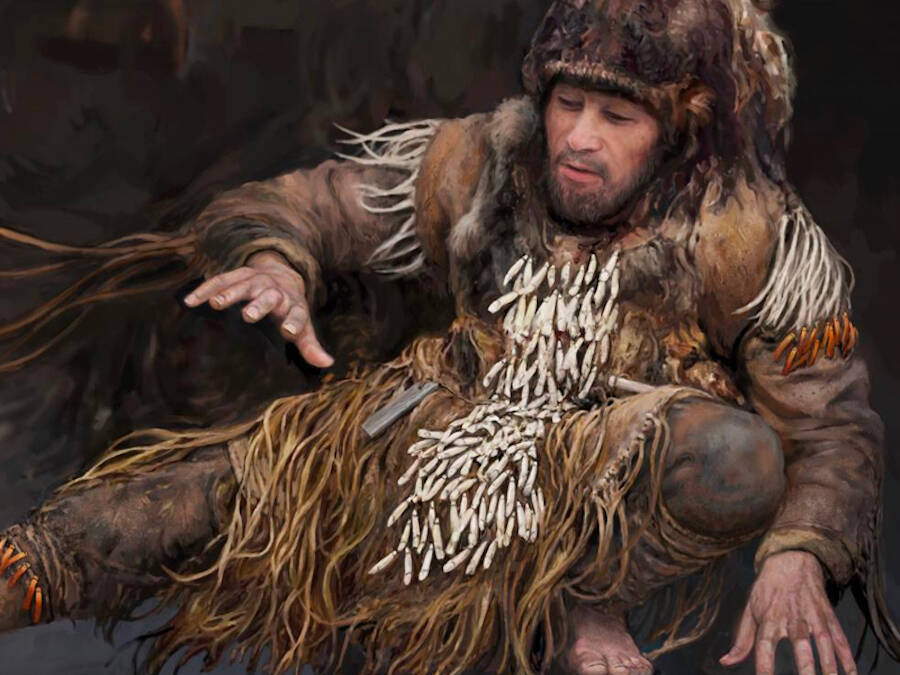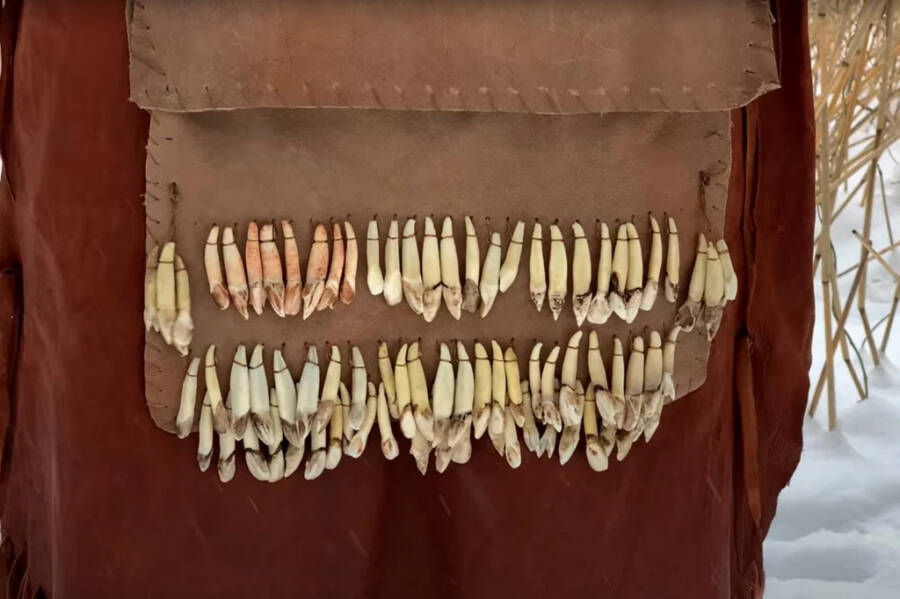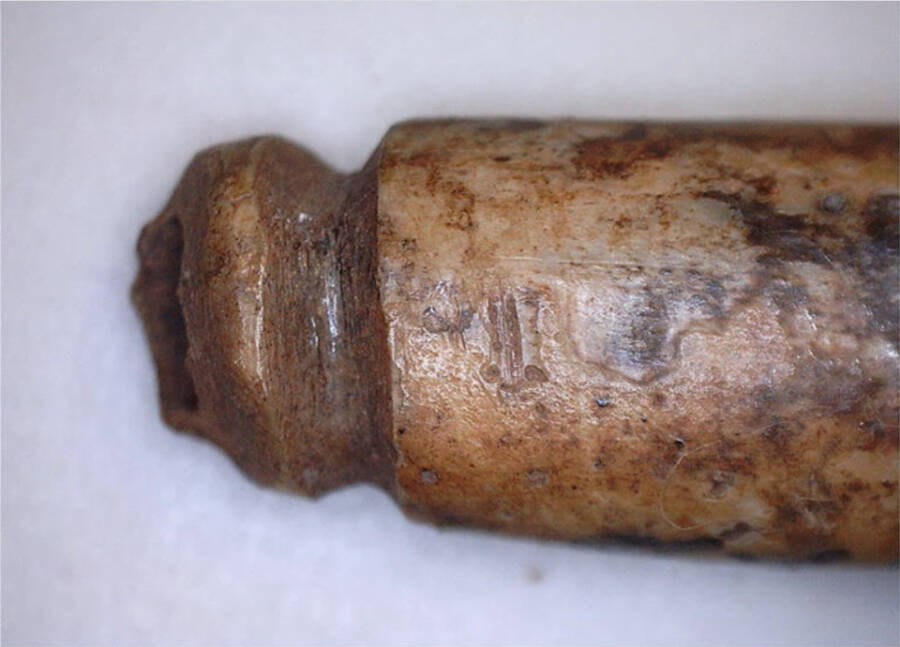Thousands of elk teeth were discovered in a prehistoric burial ground. They showed wear patterns that could only have been produced through years of dancing.

University of HelsinkiAn illustration of a Stone Age person dancing while wearing “tooth rattlers.”
The Yuzhniy Oleniy Ostrov site in Karelia, Russia is the largest Mesolithic cemetery in Northern Europe. Surprisingly, over half of the 177 graves discovered there yielded elaborate elk tooth ornaments, which left experts confused. It is now believed these were worn to produce entrancing noise at ritualistic dances.
Archaeologists have dated the ornaments to around 8,000 years ago. Many of them are more elaborate than others and contain over 300 individual teeth. Only a recent study by experts from the University of Helsinki and the Russian Academy of Sciences has convincingly posited a theory concerning their exact use.
According to the study published in the Cambridge Archaeological Journal, these elk-tooth ornaments were secured onto Stone Age clothing before groups of these prehistoric peoples engaged in psychedelic dance rituals. Auditory archaeologist Riitta Rainio of the University of Helsinki danced in a reconstructed rattler for six straight hours to test the theory.
“Wearing such rattlers while dancing makes it easier to immerse yourself in the soundscape, eventually letting the sound and rhythm take control of your movements,” Rainio said. “It is as if the dance is led in the dance by someone.”

University of HelsinkiThe elk tooth ornaments worn by Riitta Rainio of the University of Helsinki during her six-hour-long dance test.
Rainio used modern versions of these “teeth rattlers” to engage in her dance, and then compared the wear marks left on them with those discovered at the prehistoric burial ground. The research team found that the tiny nicks and scratches were remarkably similar to those on the 8,000-year-old teeth.
The team also wore their modern versions during their daily chores at around 60 hours across one month. It was found that mere walking and jumping didn’t add to the distinctive markings and that the nicks on the excavated Stone Age teeth were much more substantial.
“As the Stone Age teeth were worn for years or even decades, it’s no surprise that their marks are so distinctive,” explained co-author Evgeny Girya of the Russian Academy of Sciences.
Researchers have found more than 4,300 of these incisors to date, while the clothing they were believed to have been pinned to has since eroded. Nearby petroglyphs, meanwhile, showed elk teeth were cherished by prehistoric locals.

Cambridge UniversityA map of Yuzhniy Oleniy Ostrov in relation to Russia and Finland.
With a test by Rainio herself, which saw researchers attach the teeth to a dress before her dance began, the study has made a strong case for the musical instrument theory. The paper also explained that many ethnomusicologists believe shells, bones, teeth, hooves, and beaks were the world’s earliest instruments.
The experts are fairly confident that these ornaments were pinned to everything from cloaks and headdresses to dresses. Rattles produced by their clanking have been used in religious ceremonies for millennia, with many groups like the Tlingit of the Pacific Northwest still practicing that ritual to this day.
For those who remain unconvinced by prehistoric peoples engaging in psychedelic or generally entrancing rituals, archaeologists and historians have proven this was more common than previously believed.

University of HelsinkiA close-up view of one of the elk teeth discovered at Yuzhniy Oleniy Ostrov showing how it was carved in order to be sewn onto a garment.
A study in April found that early humans took to deep caves for the low oxygen supply as a form of entering an altered psychological state from hypoxia.
Last November, researchers also discovered that Indigenous Californians would chew on hallucinogenic Dautra wrightii plants within caves and draw on cave walls while inebriated.
And now, entrancing elk tooth percussion in northern Russia can be added to the list of party pleasures across time and continents, proving that even Stone Age hunter-gatherers took the time to lose themselves in the music.
“Elk tooth rattlers are fascinating, since they transport modern people to a soundscape that is thousands of years old and to its emotional rhythms that guide the body,” said Kristiina Mannermaa, who co-authored the study.
“You can close your eyes, listen to the sound or the rattlers and drift on the sound waves to a lakeside campfire in the world of Stone Age hunter-gatherers.”
After reading about the study suggesting Stone Age people had hours-long dances, learn about this gruesome Stone Age burial ground in Sweden that has experts baffled. Then, read about the trippy history of peyote, the mysterious Navajo hallucinogen.





